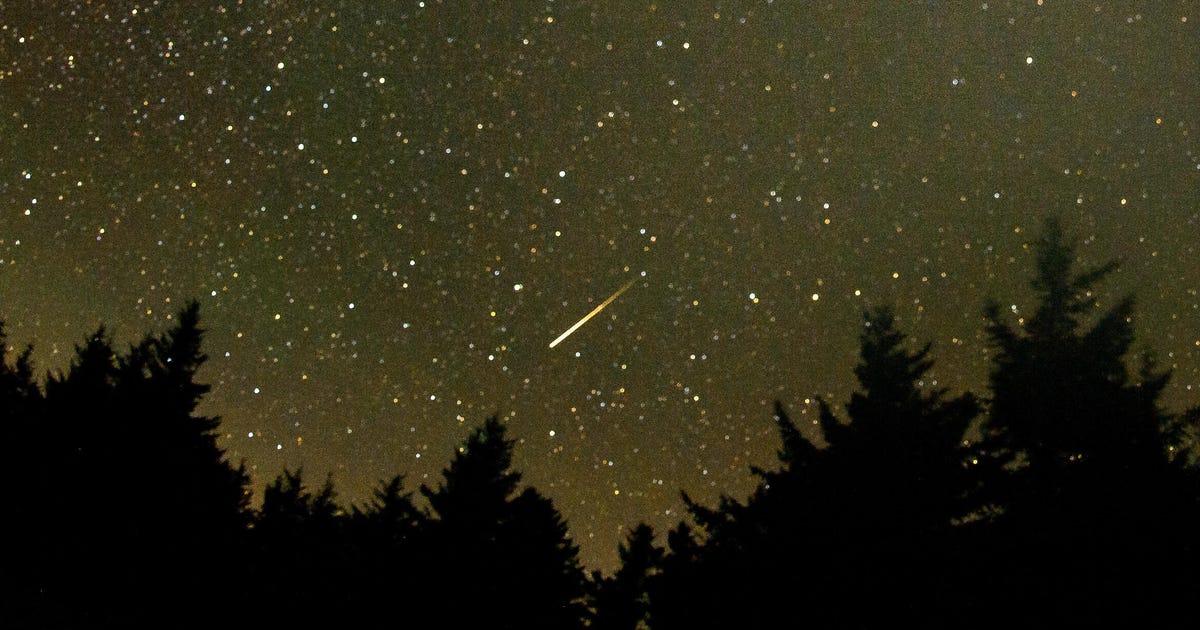
A Perseid meteor crosses the sky in 2016.
NASA/Bill IngallsThe Perseid meteor shower is one of the most stunning celestial displays visible on Earth. Eye-opening "shooting stars" will blaze over the Earth in July and August, thanks to debris from large comet 109P/Swift-Tuttle slamming into Earth's atmosphere. You don't want to miss it, and here's how you can see the shower as it ramps up.
According to NASA, the annual Perseids are active from now through Aug. 24. The space agency says it's "considered the best meteor shower of the year." The meteor activity will peak on the night of Aug. 11 and morning of Aug. 12.
The Perseids are popular for their reliability and the potential for spectacular fireballs. "The Perseids are one of the most plentiful showers (50 to 100 meteors seen per hour) and occur with warm summer nighttime weather, allowing sky watchers to easily view them," said NASA in a Perseids explainer geared for the Northern Hemisphere.
On Monday, NASA's Marshall Space Flight Center shared an image of a streaking Perseid meteor spotted by a camera at the Mount Lemmon Observatory in Arizona.
Fireballs can happen when larger pieces of comet debris strike the atmosphere, creating long, bright streaks, the kind that make you say "Whoa!" Ready to get excited? Check out these photos from last year's shower:
2020 Perseid meteor shower photos shine bright in a dark year
See all photosCatch a shooting star
At its simplest, viewing the meteor shower is just about heading out at night and looking up, but there are some steps you can take to improve your chances at catching a good show. You're in luck if you're a super-early riser. The pre-dawn hours are a prime viewing time, but NASA also says you can see the meteors as early as 10 p.m. local time.
Some of the biggest obstacles to good meteor viewing are cloudy weather and light pollution. Aim for a clear night and try to get away from city lights. A hammock, blanket or a chair that leans back will save you from craning your neck. Give your eyes plenty of time to adjust to the darkness.
You can spot the meteors anywhere in the sky, though they get their name because they appear to be radiating from the constellation Perseus. To find Perseus, check out a stargazing app that will help you locate the constellation. Perseus isn't the actual source of the shower, but it can be helpful in tracking down the sometimes elusive streaks of light.
Watch a livestream
The Virtual Telescope Project will host a livestreamed Perseids viewing session on Aug. 10 at 5 p.m. PT. "This year, the sky conditions will be perfect, with no moon interference," said VTP founder Gianluca Masi in an announcement.
You don't have to wait for the mid-August peak to enjoy the action. A dark spot on a clear night can deliver a worthwhile viewing experience throughout the Perseids' visit. Catch those shooting stars while you can.
Follow CNET's 2021 Space Calendar to stay up to date with all the latest space news this year. You can even add it to your own Google Calendar.
"dazzling" - Google News
July 28, 2021 at 11:50PM
https://ift.tt/3ifCEpH
Perseid meteor shower 2021 heats up: How to watch the dazzling show - CNET
"dazzling" - Google News
https://ift.tt/2SitLND
Shoes Man Tutorial
Pos News Update
Meme Update
Korean Entertainment News
Japan News Update
Bagikan Berita Ini















0 Response to "Perseid meteor shower 2021 heats up: How to watch the dazzling show - CNET"
Post a Comment